Fun facts
A whole century in the same location
Although the collection was relocated several times during the first few decades of its existence, (being relatively small and easily transported), during the last hundred years it is permanently positioned at the Marko Marulić Square 20. The photograph from this early period shows original wooden cases in the background, still in use today. Today, the central part of the room is dominated by an additional block of cases, which was added later.
The “discovery” of the collection of seeds and fruits from Prof Ivo Horvat
During 2019, an unknown and completely forgotten carpological collection was found in the basement of the Faculty of Veterinary Medicine. This turned out to be the collection prepared by Prof Ivo Horvat, one of the most important Croatian botanists of 20th century, who was working on the same Faculty for the most of his career. The collection holds 515 glass containers with labels holding Latin names, while the material belongs to as many as 486 plant taxa. The collection was fully systemized and digitized in 2020.
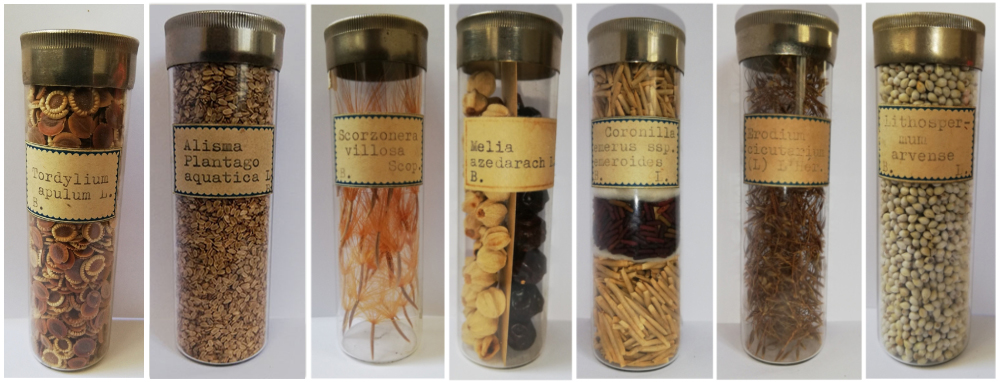
Examples from the carpological collection of Prof. Ivo Horvat.
Digitization of the oldest known Croatian herbarium collection
The oldest known Croatian herbarium collection belonged to Count Franjo Vojković-Vojkffy Klokočki, a Croatian nobleman and amateur florists, who lived at the turn of 18th to 19th century. During his lifetime, he collected herbarium specimens, which are still stored in the original protective cases and are in good condition. In total, there are 355 specimens belonging to 70 different families. Among them 183 specimens were systematized by Count Vojković according to Linne in Genera Plantarum vol. I and II, while the rest of the material was not systematized. The renowned Croatian naturalist Dragutin Hirc brought Count Vojković’s herbarium to the Department of Botany and Physiology (now Division of Botany) in 1910 and wrote an article about it for the Periodicum Biologorum in 1911, providing the partial list of species found in the herbarium. In 2019 the entire collection was digitalized and the list of the species completed.

The whole collection of Count Franjo Vojković-Vojkffy Klokočki.
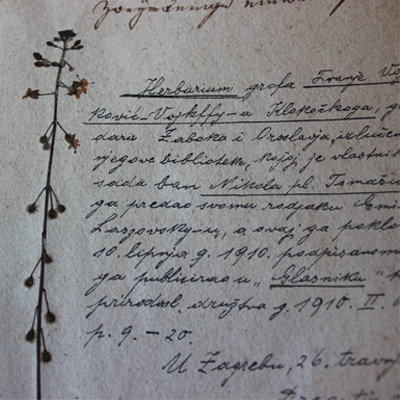
Notation from Dragutin Hirc on the herbarium of Count Vojković.
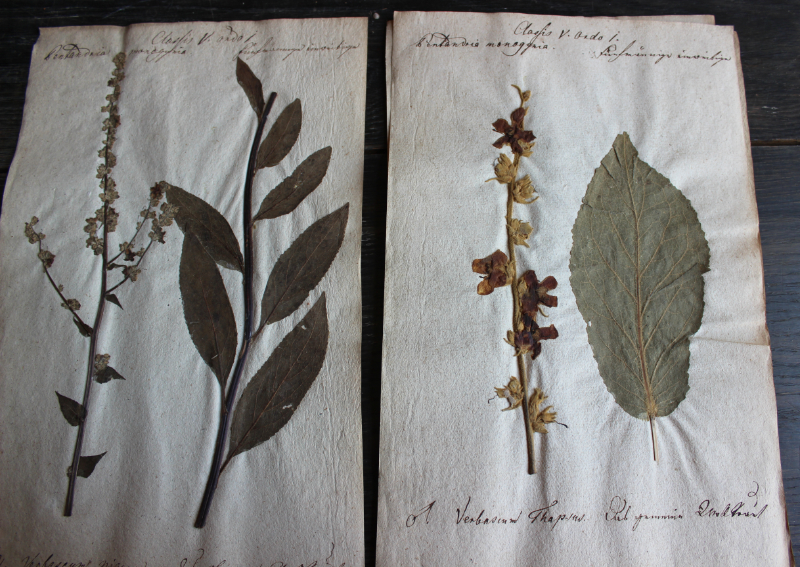
Examples of herbarized plants in the collection of Count Vojković.
Beech from northern Germany collected in 1802 is the oldest example in the ZA collection
During the digitization of the genus Fagus, the oldest known example from Croatian herbaria was found in our collection. It was the example of beech, collected in 1802 near the settlement of Wernigerode situated on the slopes of Hanz Mountain in northern Germany. Unfortunately, the collector did not reveal his identity on the herbarium label. The specimen is two hundred years old and in excellent condition, stored in the Herbarium Generale of the ZA collection.
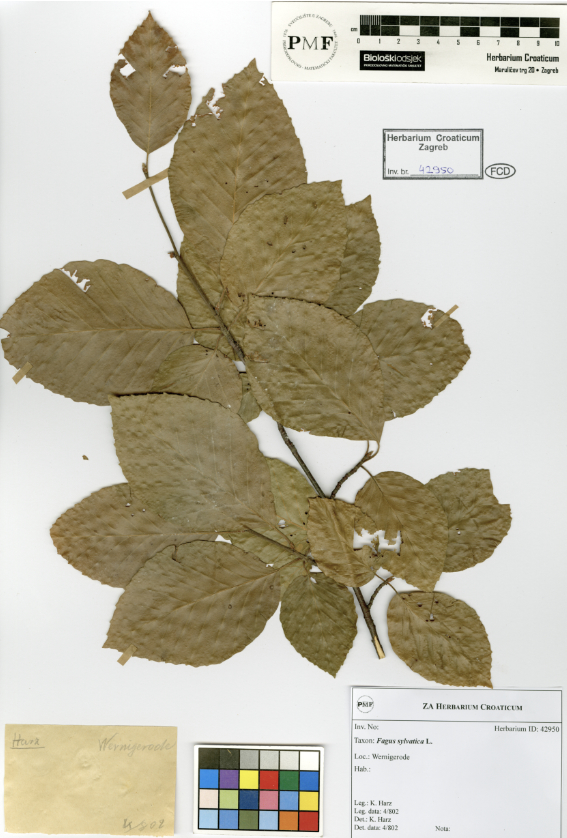
The oldest example in the ZA collection.
Forgotten orchids hidden in the herbarium collection
Among as many as 1942 herbarium sheets of orchids kept in the ZA and ZAHO collections, there are two species collected in the 19th century, without any written evidence about their existence in Croatian flora other than the herbarium sheet. Malaxis monophyllos (L.) Sw. was collected by Josip Schlosser on the Ivanščica Mountain, while Herminium monorchis (L.) R. Br. was collected by Hugo von Klinggräff on mountain meadows in the vicinity of Čabar.
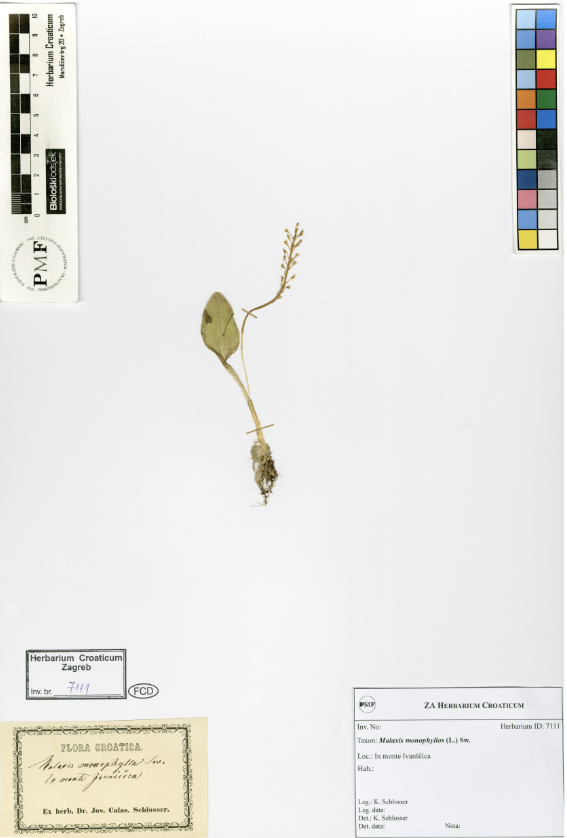

Herbarium sheets of Malaxis monophyllos (L.) Sw. (left) and Herminium monorchis (L.) R. Br. (right).
The herbarium reveals the time of arrival of invasive plants
Herbarium collections often keep the information about the time of arrival or naturalization of a certain invasive species in the new area. In ZA and ZAHO collections, very old examples of certain species have been found, witnessing the time of their arrival on the Croatian territory, even much earlier that the first literature record. For example, the invasive Canadian pondweed (Elodea canadensis Michx.) was collected for the first time at the end of the 19th century by Josip Schlosser in Posavina and Stjepan Gjurasin in Podravina, while the first literature record for Croatia dates from the mid-20th century.
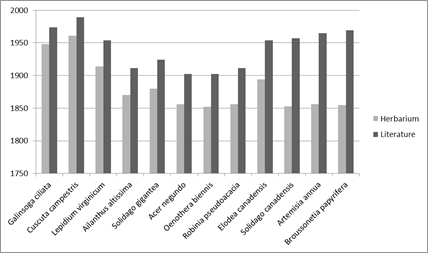
The relationship between the age of literature and herbarium data on the findings of some invasive plants in Croatia (left) and the herbarium sheet of Canadian elodea from the 19thcentury (right).

Herbarium label as the only evidence
A herbarium sheet with no herbarium label has almost no informative value. However, if a herbarium sheet with no plant material (but with a label) occurs, this can still be the evidence of plant occurrence, as it puts the collection in a certain place and time. This mostly occurs when the dry plant is destroyed by insects or fungi. Also, if the material is not properly fixed and stored, it can possibly get lost due to often handling or translocations of the collection. Similar probably happened to the only example of Luronium natans (L.) Raffin, an aquatic plant extremely rare in the Balkans. When searching for this material, we have found an empty sheet with a label attached. The label reveals that Ljudevit Rossi collected the material in 1916 in the river Korana near Karlovac. As this was the only “proof” of its existence in Croatian flora, the species is now designated as “dubious”.
Herbarium sheet of Luronium natans (L.) Raffin with no plant material but with preserved label.

Herbarium Croaticum is listed as cultural heritage
Herbarium Croaticum is listed in the Registry of Cultural Heritage of the Republic of Croatia, as a temporarily protected cultural heritage by the Decision of the City Institute for the Conservation of Cultural and Natural Heritage from 2019. The collection is a reflection of continuous botanical activity since the 19th century onward, with immense cultural and historical importance of national dimensions.
ZAHO collection holds type specimens of Croatian national flower
Croatian iris (Iris croatica Horvat et M. D. Horvat) was described by the famous Croatian botanist Ivo Horvat and his wife Marija Dvoržak Horvat in 1962. In 2000, this species was designated as the Croatian national flower, following the suggestion from the Croatian Academy of Science and Art. Type specimens of this endemic taxon are stored within the ZAHO collection.
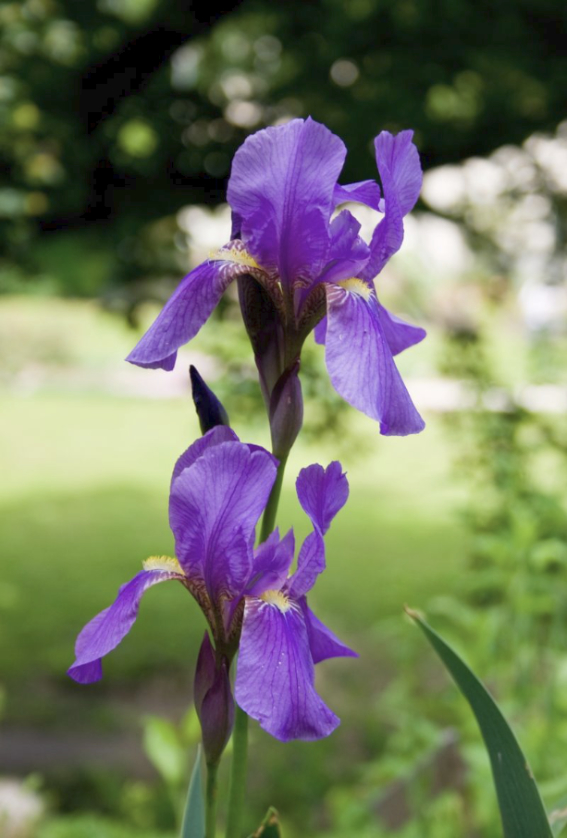
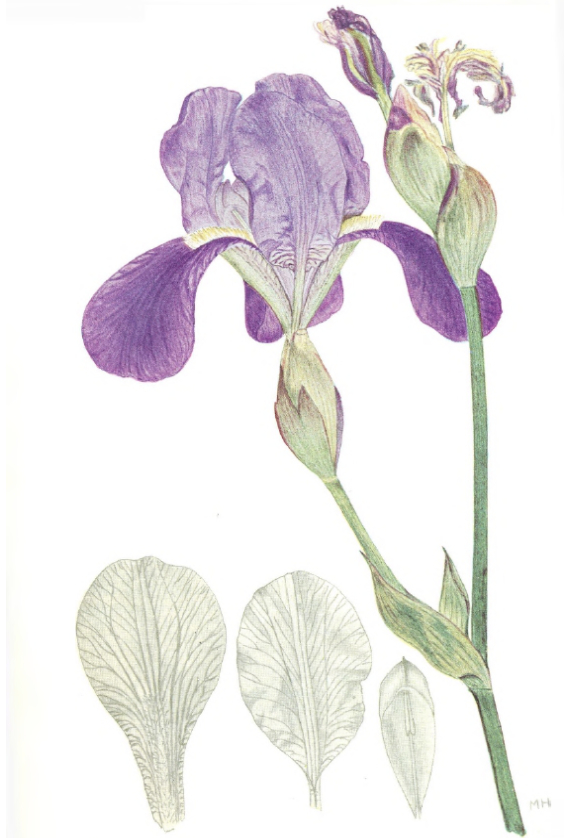
Croatian iris. Live plant (left) and original drawings from Ivo Horvat (right).
Harmful insects within the collections
Large quantity of dried plants in one place attracts pests feeding on the dry plant material. In our collections, we are continuously monitoring the occurrence of pests using gluey traps for insects. So far, we have recorded occasional invasions of small insect Lasioderma serricorne L., a species capable of producing up to six generations in a herbarium. Adults enter the herbarium from outer space, being good flyers, while the larvae feed on the material and present the real threat for the collection. They can survive within the herbarium sheets for five to ten weeks, causing significant damage by feeding on the material.
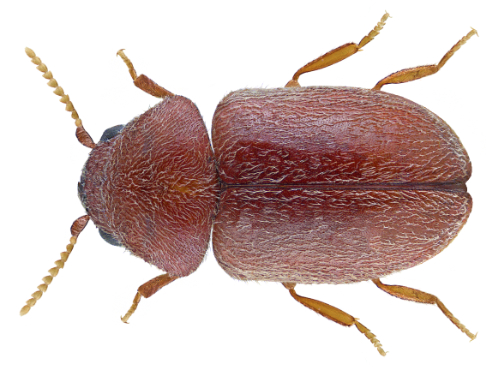
The appearance of the insect Lasioderma serricorne L. (Photo: U. Schmidt)

